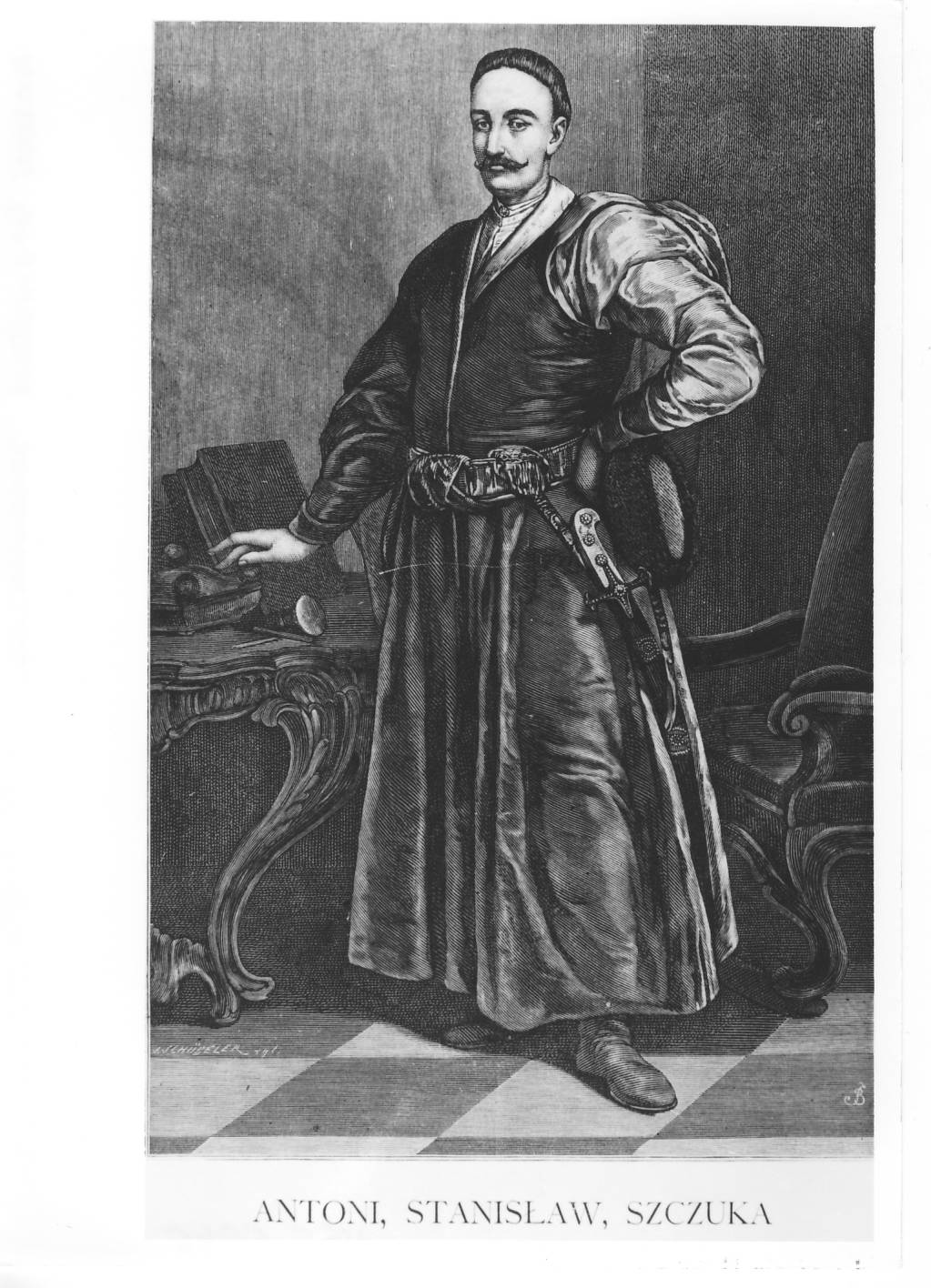
Antoni Stanisław Szczuka (1654–1710), bearer of the Grabie coat of arms, “in his day an outstanding statesman of Old Polish virtue, master of Szczuczyn and Radzyń” (Orgelbrand), was noted for his righteous character. He made himself known as a gifted secretary committed to the king. As Kasper Niesiecki noted in his Herbarz polski, “A respecter of exemplary subjects, Jan III discerned high virtues in Szczuka and began applying his service in public interests”. The king promoted him to be the Crown Referendary (1688) and also granted the trusted advisor the starosties of Lublin and Warsaw. As Niesiecki goes on to observe, “Being a parliamentarian, he attended various Sejm sittings and used his bearing in solving more complicated issues of national importance, was the speaker of the upper chamber in 1689 and 1690, when his graceful speech, profound reason and uncorrupted love for the Homeland emerged”. Szczuka’s mediation skills, his sagacity and honesty gained him the function of the adviser to the Sobieski princes, the plenipotentiary of Prince Jakub Ludwik in Poland and the steward of his property in Żmudź [Samogitia] and in the Lublin region. After King Sobieski’s death, Szczuka supported Augustus II and in his reign he was appointed Deputy Chancellor of the Great Duchy of Lithuania (1699).
In 1719 Antoni Stanisław Szczuka’s only daughter Wiktoria married Jan Stanisław Kątski (Kącki), a general of Podolia and artillery general. The single child born to the couple, daughter Marianna (died in 1768), was married to Eustachy Potocki, a general of the Lithuanian artillery and mother of Stanisław Kostka Potocki, the later owner of Wilanów. Her dowry combined huge wealth of both the Kątski and the Szczuka families.
Perhaps it was Antoni Stanisław Szczuka’s granddaughter Marianna Potocka who commissioned the whole-figure image of her grandfather depicted in Polish dress, against an interior background (the painting in the Wilanów Palace Museum). Rococo furnishings and the model’s attire help to date the painting to 1735–1740. Compared with Szczuka’s other images – his coffin portrait in a Szczuczyn parish church and an eighteenth-century oil half-figure portrait in a set of armour with a mace in his hand, part of the Lviv Historical Museum collection – the Wilanów painting depicts a model of facial features completely devoid of resemblance. Therefore, the discussed painting of undetermined authorship and Polish provenance is in fact entirely imaginary.
Still, it has gained the greatest popularity. Throughout the nineteenth century at least three times was it was wood-engraved by Warsaw artists working for publishers active in the capital city. From the artistic point of view the best work is the woodcut by Julian Schübeler, based on a sketch by Józef Buchbinder. Inserted as a separate plate in-between pages, the woodcut decorated the impressive album by Józef Łoski entitled Jan Sobieski, jego rodzina, towarzysze broni i współczesne zabytki [Jan Sobieski, his family, comrades-in-arms, and contemporary monuments] (Warszawa 1883).
Julian Schübeler, based on a drawing by Józef Buchbinder, according to a painting by an anonymous painter from 1735–1740: Portrait of Antoni Stanisław Szczuka, woodcut, publ. 1883.
We would like to inform that for the purpose of optimisation of content available on our website and its customisation according to your needs, we use information stored by means of cookies on the Users' end devices. You can control cookies by means of your Internet browser settings. Further use of our website without change of the browser settings means that you accept the use of cookies. For more information on cookies used by us and to feel comfortable about this subject, please familiarise yourselves with our Privacy Policy.
✓ I understand